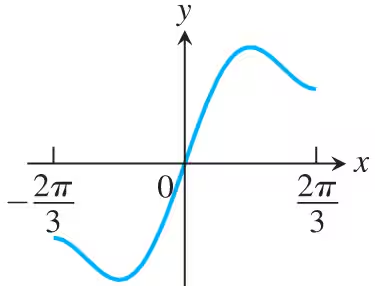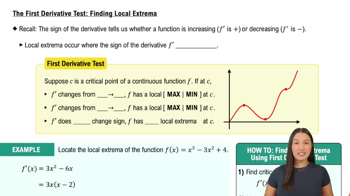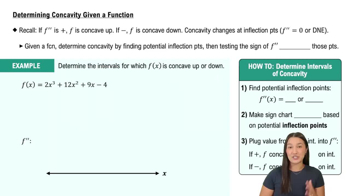Identifying Extrema
In Exercises 19–40:
b. Identify the function’s local extreme values, if any, saying where they occur.
f(θ) = 3θ² − 4θ³

 Verified step by step guidance
Verified step by step guidance Verified video answer for a similar problem:
Verified video answer for a similar problem:



 6:02m
6:02mMaster The Second Derivative Test: Finding Local Extrema with a bite sized video explanation from Patrick
Start learning